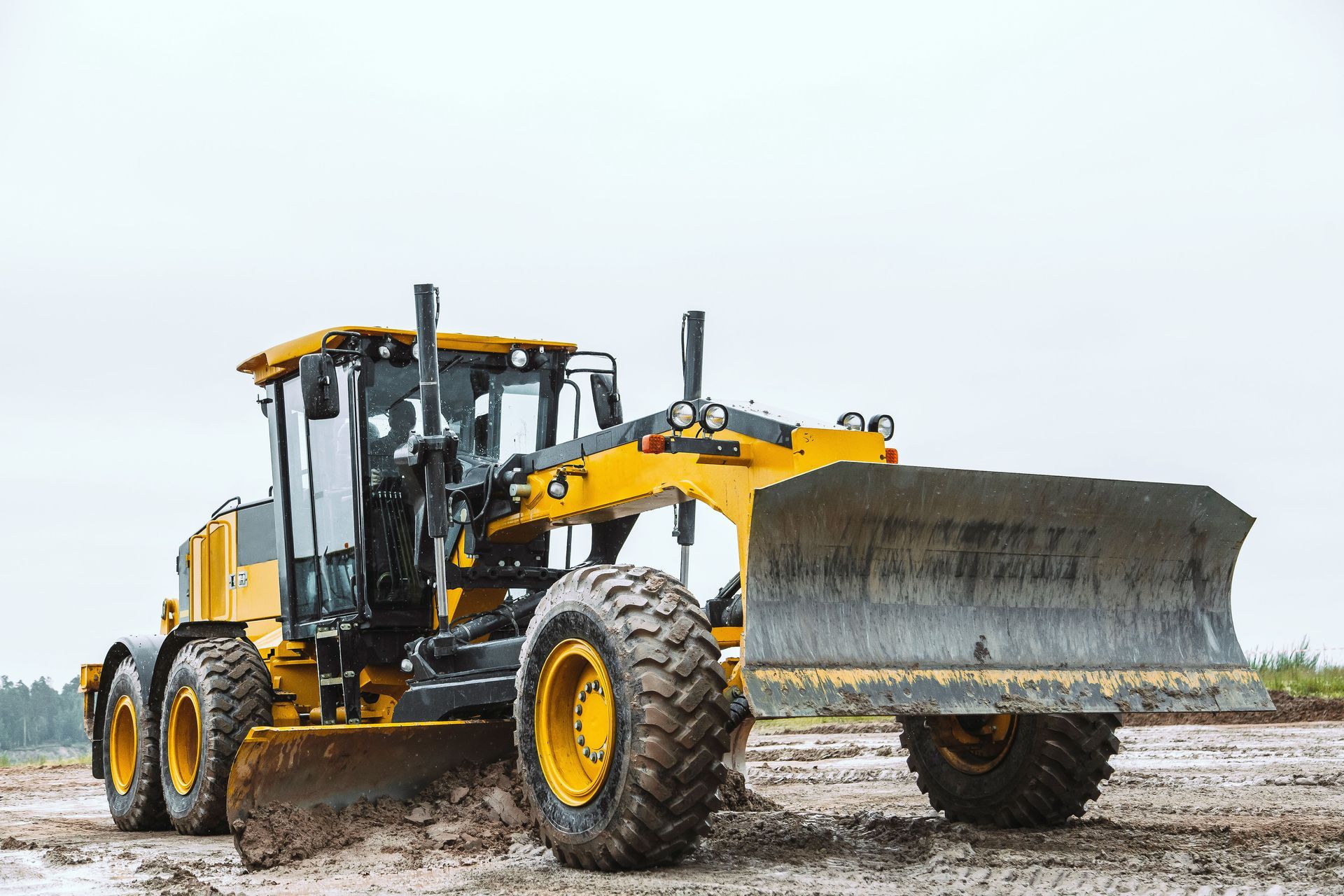A Complete Guide to Land Clearing Companies: What Property Owners Should Know
Land clearing plays a crucial role in property development and maintenance. It involves the systematic removal of trees, stumps, brush, and debris to prepare land for construction, agriculture, or other uses. For property owners, understanding this process is key to transforming undeveloped land into usable, safe, and compliant spaces.
More than just removing obstacles, effective land clearing requires planning, environmental awareness, and adherence to legal regulations. According to SiteLine.com, there are nearly 235,000 excavation and site development contractors in the U.S., reflecting the scale and demand for professional land preparation services. Whether for residential expansion, commercial development, or agricultural preparation, properly cleared land provides a foundation for long-term growth and safety. This guide explores what property owners should know when working with professional land clearing companies.
Understanding the Basics of Land Clearing
Land clearing companies specialize in transforming overgrown, obstructed, or unused terrain into usable land. It’s the first phase of nearly all development projects, providing a blank slate for future construction or landscaping. Clearing enhances land value, prevents hazards, and creates a safer environment for workers and future occupants.
Depending on the type of vegetation, soil conditions, and environmental concerns, different methods are used. Professional land clearing companies evaluate these factors to determine the best approach, balancing efficiency with environmental preservation. The goal is not only to make the land usable but also to maintain ecological balance.
Common Land Clearing Methods
Professional land clearing companies employ a variety of methods suited to the land’s terrain and purpose. Bulldozing and excavation are common for large, flat areas where fast clearing is needed. For projects requiring precision, such as near structures or in selective clearing zones, chainsaws, excavators, or specialized forestry machinery are used.
Mulching has gained popularity as a sustainable technique. It grinds vegetation into organic matter left on-site to protect topsoil and prevent erosion. In more sensitive areas, hand-clearing or low-impact mechanical options may be used to minimize disturbance. Understanding these techniques helps property owners choose a company that aligns with both their goals and local regulations.
Why Land Clearing Matters for Property Owners
For property owners, proper land clearing sets the stage for all future improvements. It allows for accurate surveying, safe construction, and long-term land management. Clearing overgrowth also prevents problems such as pest infestations, fire hazards, and drainage issues that can damage nearby structures.
Beyond practical benefits, cleared land boosts curb appeal and property value. It creates a clean, functional space that is easier to maintain and more appealing to potential investors or buyers. Hiring professional land clearing companies not only improves aesthetics but also demonstrates responsible land stewardship.
Environmental Responsibility in Land Clearing
Modern land clearing companies emphasize environmental responsibility in every project. Sustainable clearing practices preserve soil health, prevent erosion, and protect native habitats. By carefully selecting equipment and techniques, contractors can minimize ecological disturbance and maintain biodiversity on and around the site.
Experienced companies often consult environmental experts before clearing begins. This step helps identify protected species, watercourses, or erosion-prone areas that require special handling. Responsible clearing contributes to a healthier landscape and supports long-term sustainability for the surrounding ecosystem.
Choosing the Right Land Clearing Company
Selecting a reliable company determines the success of any project. Property owners should look for land clearing companies with proven experience, positive reviews, and a track record of handling similar projects. Knowledge of local terrain and regulations is essential for avoiding delays and compliance issues.
Reputation is another key factor. Reading client testimonials and examining past projects provides insight into a company’s reliability and professionalism. Companies that maintain open communication, transparent timelines, and attention to safety standards are typically the most dependable partners.
Verifying Credentials and Licenses
Before hiring, property owners should verify that land clearing companies hold valid licenses and certifications. These credentials demonstrate compliance with legal and safety standards and show that the company is authorized to operate heavy equipment and perform regulated clearing activities.
Reputable contractors will provide documentation on request and maintain memberships in professional or environmental associations. Confirming insurance coverage, including general liability and workers’ compensation, protects both property owners and workers in case of accidents or damages.
Key Questions to Ask Contractors
Before committing to a contractor, asking the right questions can reveal much about their capabilities and professionalism. Inquire about their experience with projects similar in scale and terrain to yours, as well as their environmental practices. Discuss the expected project timeline and how they handle unforeseen site challenges.
It’s also wise to ask about post-clearing services, such as debris removal, grading, or erosion control. Contractors who offer comprehensive services tend to deliver smoother results. Clear communication from the start helps establish realistic expectations and ensures alignment between both parties.
Safety Standards in Land Clearing
Safety is paramount in land clearing. Professional land clearing companies adhere to strict safety guidelines to prevent injuries and equipment accidents. Operators undergo extensive training to manage machinery efficiently and recognize potential hazards such as unstable trees or underground utilities.
Safety also extends to environmental protection. By using precise techniques and following site-specific plans, crews prevent unnecessary damage to soil or water sources. A company’s safety culture reflects its commitment to quality and accountability, protecting both the property and the surrounding environment.
Regulations and Permits in Land Clearing
Compliance with regulations is one of the most important aspects of land clearing. Federal, state, and local laws dictate how clearing can be conducted to safeguard natural resources and community interests. Failing to follow these rules can lead to costly delays or fines.
Land clearing companies that understand local and federal requirements help property owners avoid compliance issues. The Clean Water Act and Endangered Species Act regulate clearing near wetlands or protected habitats, while state and municipal laws define methods, working hours, and disposal standards. Partnering with knowledgeable professionals ensures responsible and lawful development.
The Importance of Local Ordinances
Many municipalities impose additional land-use rules to protect local ecosystems. These ordinances may restrict the removal of heritage trees, control noise, or limit clearing during certain seasons to protect wildlife. Compliance with these local requirements demonstrates respect for community standards and helps avoid disputes with neighbors or local authorities.
Working closely with local planning offices helps property owners understand how zoning and land-use regulations affect their project. Experienced land clearing companies can guide clients through this process, securing necessary approvals and aligning the project with local environmental goals.
Environmental Protection and Compliance
Environmental compliance extends beyond obtaining permits—it’s about upholding responsible practices during and after clearing. This includes protecting topsoil, managing runoff, and restoring vegetation where necessary. Land clearing companies that integrate sustainable techniques show a commitment to ecological preservation while achieving project objectives.
Environmental assessments conducted before clearing can identify potential hazards such as erosion-prone slopes or sensitive habitats. Addressing these factors early reduces risks and promotes long-term site stability. Responsible land clearing supports both economic development and environmental health.
Benefits of Working with Professional Land Clearing Companies
Hiring experienced land clearing companies provides property owners with efficiency, safety, and compliance. Professionals bring expertise in equipment operation, environmental management, and project coordination, ensuring every step aligns with regulations and deadlines.
These companies also possess the specialized tools and manpower to complete jobs faster and with greater precision than untrained individuals. Their experience minimizes risks while optimizing results, making professional services a worthwhile investment for any property improvement or development project.
Land clearing is a foundational step in transforming raw property into functional, valuable land. It requires careful planning, regulatory awareness, and a responsible approach to environmental management. Partnering with reputable, licensed land clearing companies helps property owners achieve their development goals safely and efficiently.
By understanding the process, confirming credentials, and prioritizing sustainability, property owners can turn overgrown or unusable land into a well-prepared space ready for construction, agriculture, or long-term maintenance. With the right professional guidance, every clearing project can balance progress with environmental care. Reach out to Six Arrows Land Management today to learn more.


Share On: